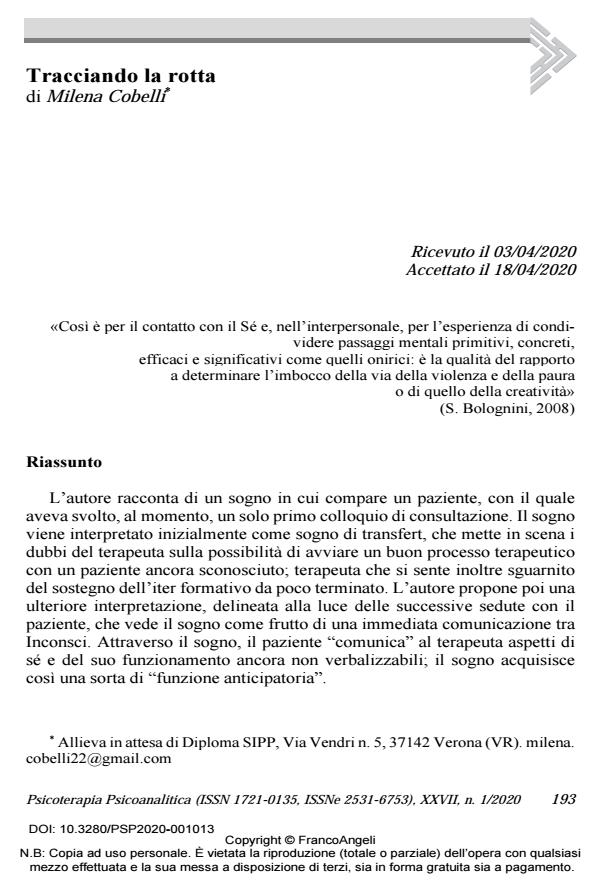Plotting the way
Journal title PSICOTERAPIA PSICOANALITICA
Author/s Milena Cobelli
Publishing Year 2020 Issue 2020/1
Language Italian Pages 13 P. 193-205 File size 185 KB
DOI 10.3280/PSP2020-001013
DOI is like a bar code for intellectual property: to have more infomation
click here
Below, you can see the article first page
If you want to buy this article in PDF format, you can do it, following the instructions to buy download credits

FrancoAngeli is member of Publishers International Linking Association, Inc (PILA), a not-for-profit association which run the CrossRef service enabling links to and from online scholarly content.
The Author recalls dreaming about a patient she has just seen in first consultation. Initially, the dream is interpreted as a transference dream showing the therapist’s doubts about the possibility to start a good ther-apy with an unknown patient; the therapist also feels deprived of the support of the recently completed training process. The Author then proposes a further interpretation, outlined in the light of the following therapy sessions with the patient, according to which the dream is seen as the result of an immediate communication between their subcon-scious minds. Through the dream, the patient "communicates" to the therapist aspects of his own self and functioning that have not been verbalized yet; the dream thus acquires a sort of "anticipatory function". This paper aims to highlight how this dream, on the one hand, sug-gested how to prepare for the clinical meeting, and on the other hand, how this dream also performed the function to show the therapist how to begin and proceed in the therapeutic work with the patient she dreamt of.
Keywords: Psychoanalyst’s dream, transference dream/countertransference dream, first consultation, subconscious communication, starting therapy.
Milena Cobelli, Tracciando la rotta in "PSICOTERAPIA PSICOANALITICA" 1/2020, pp 193-205, DOI: 10.3280/PSP2020-001013